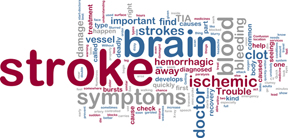People who live in the Stroke Belt are more likely to develop cognitive decline, according to new data from a long-running University of Alabama at Birmingham study. It’s hoped that linking cognitive decline to stroke-risk factors could lead to stroke prevention.
 People living in this eight-state region, defined by a risk of stroke death higher than in the rest of the nation, are at 18 percent higher risk of developing incident cognitive impairment, which includes failing memory and processing thoughts more slowly, says the study author in the May 27, 2011, online issue of the Annals of Neurology, the official journal of the American Neurological Association.
People living in this eight-state region, defined by a risk of stroke death higher than in the rest of the nation, are at 18 percent higher risk of developing incident cognitive impairment, which includes failing memory and processing thoughts more slowly, says the study author in the May 27, 2011, online issue of the Annals of Neurology, the official journal of the American Neurological Association.
The study doesn’t determine that simply living in the Stroke Belt is bad for the brain, says Virginia Wadley, Ph.D., UAB associate professor of medicine. “More likely, there are unmeasured factors that are detrimental. These include health disparities, socioeconomic factors and educational quality.”
The study was part of the long-running REGARDS (Reasons for Geographic and Racial Differences in Stroke) trial led by George Howard, Dr. PH, at UAB. REGARDS enrolled 30,239 people ages 45 and older between January 2003 and October 2007; it continues to follow participants for health events.
Brain function was assessed by researchers through the Six-item Screener (SIS), which is a test consisting of six questions including recall of a three-word list and perception of time. REGARDS participants who reported no history of stroke and were considered cognitively intact (got five or six of the six SIS questions correct) were included. If the participant scored four or lower on the SIS after initially obtaining a higher score when first enrolled, it indicated cognitive decline.
Overall, 8.1 percent of participants experienced cognitive decline during an average four-year period, after adjusting for the influences of age, sex, race and education level.
“These findings are exciting because if we can understand why people in the South are declining more rapidly, then we can do something to change it,” says Howard, professor in the UAB School of Public Health.
In the stroke belt states – Alabama, Arkansas, Georgia, Louisiana, Mississippi, North Carolina, South Carolina and Tennessee – the risk of dying from stroke is higher than in other parts of the country. In Alabama, the stroke death rate is 125 per every 100,000 people compared with a national average of 98 per 100,000.